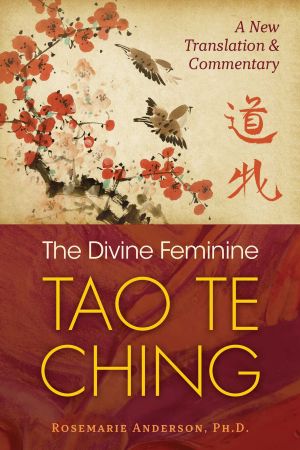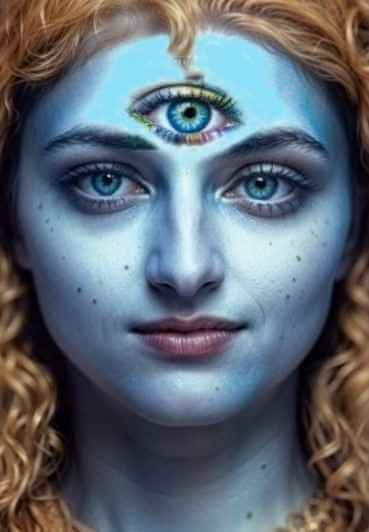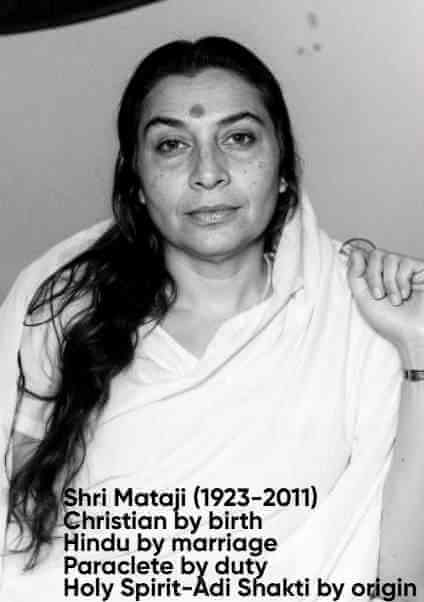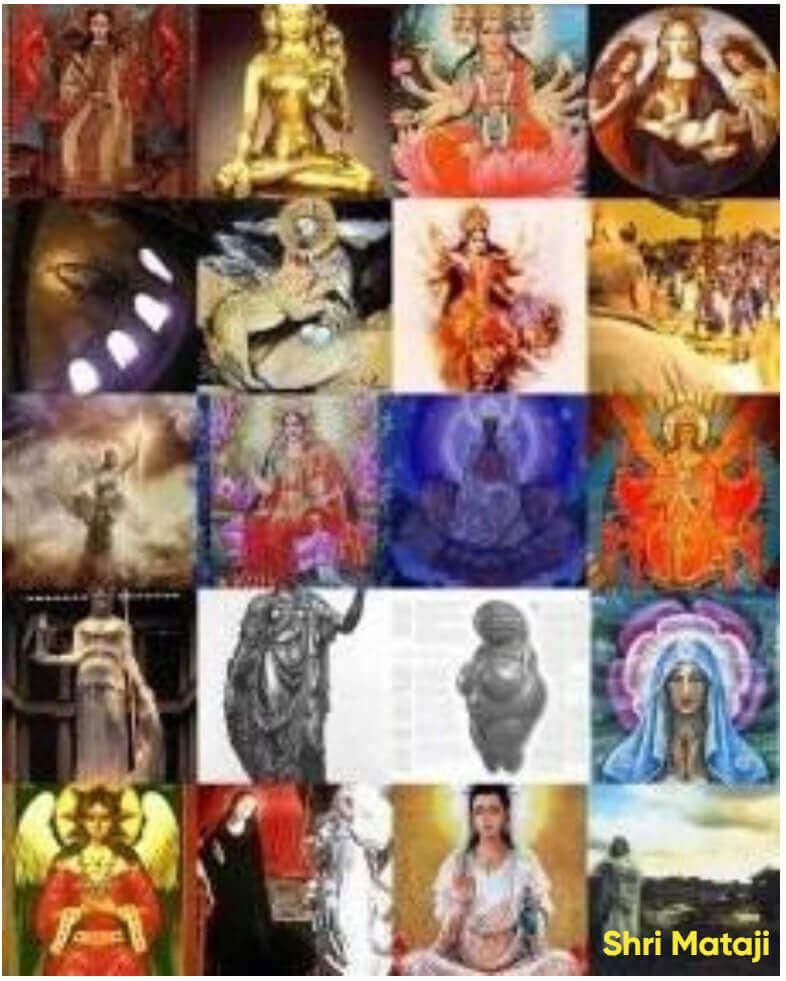The Universal Mother: Unifying Humanity Through the Divine Feminine in Taoism and Hinduism
This page affirms Shakti as the divine feminine power of God, the eternal source of prana—the Sanskrit term for “life energy” or “breath”—and reveals how Taoist Chi embodies the same universal Spirit sustaining creation. By drawing together Hindu and Taoist metaphysics, it demonstrates that Shakti, prana, and Chi are not separate forces but complementary expressions of one salvific reality, the Spirit that permeates all existence, awakens consciousness, and bridges humanity with the divine. The content emphasizes that the Divine Mother, whether invoked as Shakti in Hinduism or understood as Chi in Taoism, is the unifying principle guiding seekers beyond ritual and doctrine toward Self-realization, liberation, and collective transformation. It highlights the universality of Spirit as both immanent and transcendent, dissolving cultural and religious boundaries, and presenting the Divine Feminine as the eternal medium of divine presence, the mysterious bridge between God and humanity, and the source of all spiritual renewal and awakening across traditions.
Author: Manus AI
Date: November 23, 2025
Abstract: This paper presents a comprehensive analysis demonstrating the profound equivalence between the Taoist concept of the Tao as the Great Mother and the Hindu concept of Brahman, particularly in its manifestation as the Divine Feminine (Shakti). It argues that these two seemingly disparate traditions converge on the idea of a universal, approachable, and immanent Divine Mother as the ultimate reality and source of all creation. The paper will provide textual evidence from the Tao Te Ching and Hindu scriptures like the Devi Gita to establish that Tao and Brahman are fundamentally the same concept. Furthermore, it will emphasize the soteriological imperative for all individuals to recognize their intrinsic identity as manifestations of this Divine Mother (Tao-Brahman) as the path to liberation (Jivanmukta/Ziran). The paper concludes by advocating for the unity of all humanity under this shared understanding of the Divine Feminine, transcending cultural and religious divides by recognizing that all beings are not separate from the Mother, but are The Mother Herself.
Keywords: Tao, Brahman, Divine Feminine, Great Mother, Shakti, Adi Shakti, Taoism, Hinduism, Non-duality, Liberation, Jivanmukta, Self-Realization, Universalism, Comparative Religion
Table of Contents
- 1. Introduction: The Call of the Universal Mother
- 2. The Tao as the Great Mother: The Womb of All Creation
- 3. Brahman as the Divine Feminine: The Power of Shakti
- 4. The Convergence of Tao and Brahman: A Synthesis of the Divine Mother
- 5. The Path to Liberation: Realizing the Mother Within
- 6. Conclusion: The Unity of Humanity as The Mother Herself
- 7. References
1. Introduction: The Call of the Universal Mother
The quest for ultimate reality, for a connection to the source of existence, is a timeless human endeavor that cuts across all cultures and civilizations. While the languages and symbols used to describe this reality may differ, the underlying truth often reveals a profound and unifying vision. This paper argues that the Taoist concept of the Tao as the Great Mother and the Hindu concept of Brahman as the Divine Feminine (Shakti) are not merely similar but are fundamentally the same universal, approachable, and comforting concept. It posits that recognizing our inherent identity as a manifestation of this universal Mother is the ultimate key to spiritual liberation and the unification of all humanity. This is not an abstract theological exercise; it is a call to a lived experience, a shift in consciousness that transforms our perception of ourselves and the world. As author Wayne W. Dyer eloquently states, this recognition has profound implications for how we live our lives: [1]
This paper will explore the textual and philosophical evidence for this convergence. It will first delve into the Tao Te Ching to establish the explicit characterization of the Tao as the Great Mother. It will then examine Hindu scriptures, particularly the Devi Gita, to demonstrate that the Goddess Shakti is not merely a consort or a lower deity, but is identical to the ultimate reality, Brahman. By synthesizing these two traditions, this paper will build an irrefutable case that Tao and Brahman are two names for the same Divine Feminine principle. Finally, it will explore the soteriological path—the way of liberation—common to both, which culminates in the non-dual realization that every individual is, without question, a manifestation of "The Mother herself."
2. The Tao as the Great Mother: The Womb of All Creation

The Tao Te Ching, the foundational text of Taoism attributed to Lao-tzu, repeatedly and explicitly employs feminine and maternal imagery to describe the nature of the ultimate reality, the Tao. The Tao is not a patriarchal, distant creator god, but an immanent, nurturing, and all-encompassing womb from which all of existence emerges. This is not a mere poetic metaphor; it is central to the Taoist understanding of the cosmos. An immediate and striking parallel is drawn in the observation that the Tao is "akin to the Hindu concept of the Brahman." [2] This connection serves as a gateway to understanding the universal nature of the Divine Mother.
Several chapters of the Tao Te Ching directly identify the Tao as the Mother. Chapter 25 describes a "formless and perfect" reality that existed "before the universe was born," which it names as "The Mother of the universe":
before the universe was born.
It is serene. Empty.
Solitary. Unchanging.
Infinite. Eternally present.
It is The Mother of the universe.
For lack of a better name,
I call it the Tao." [2]
This passage establishes the Tao as the primordial, uncreated source, the eternal ground of being from which all things arise. It is infinite and ever-present, flowing through all things. The text emphasizes that while "Man follows the earth. Earth follows the universe. The universe follows the Tao," ultimately, "The Tao follows only itself," highlighting its position as the supreme, self-sufficient reality.
Chapter 6 further develops this concept through the evocative image of the "Mysterious Female" (xuanpin), a term that signifies the inexhaustible, life-giving power of the Tao:
It is called the mysterious female.
The gateway of the mysterious female
Is called the root of heaven and earth.
It is like a thread barely seen,
But use it, it will never end." [3]
The "valley spirit" (gu shen) represents the receptive, fertile emptiness of the feminine principle. It is a void that is not a nothingness, but a plenum of potential, the "womb of all creation." The "gateway of the mysterious female" is the portal through which the unmanifest Tao gives birth to the manifest world, the "root of heaven and earth." This eternal, inexhaustible source is always present within us, a subtle but powerful force we can draw upon without limit. This chapter solidifies the understanding of the Tao as a fundamentally feminine, maternal, and generative force.
Finally, Chapter 52 provides the key to liberation through this maternal principle. It instructs the seeker to "recognize the children and find The Mother," which will lead to freedom from sorrow. This is a call to trace the manifestations of the world back to their single, unified source—the Great Mother, the Tao. By using one's own inner "light" to "return to the source of light," one engages in what is called "practicing eternity." [2] This practice is not about worshipping an external deity, but about realizing one's own origin and identity within the cosmic Mother.
3. Brahman as the Divine Feminine: The Power of Shakti
Just as Taoism presents the ultimate reality through a maternal lens, Hinduism, particularly within the Shakta and Advaita Vedanta traditions, contains a profound and explicit identification of the ultimate reality, Brahman, with the Divine Feminine. While Brahman is often conceived as the formless, genderless, absolute ground of being, its creative, dynamic aspect is personified as Shakti, the Great Goddess. However, the highest scriptural revelations do not place Shakti as a mere consort or a secondary power; they declare Her to be Brahman itself, the supreme, non-dual consciousness from which everything emanates.

The Devi Gita, or "Song of the Goddess," found within the Devi Bhagavata Purana, is arguably the most important text in this regard. It uncompromisingly presents the Goddess as the ultimate reality. The text is a luminous guide to Self-realization, balancing devotion (bhakti) and knowledge (jnana) and revealing the eternal feminine principle as the source of all. [4] The philosophical core of the Devi Gita is its declaration that the path to liberation is the realization of one's own Self as the Goddess. This is encapsulated in its most revolutionary promise:
This verse (7.31-32) is a radical statement of non-dual identity. It asserts that knowing the Goddess (who is Brahman) is not a process of becoming something new, but of realizing what one already is. The knower, the knowing, and the known merge into one. The Upanishads, the philosophical bedrock of Hinduism, echo this sentiment. The Bahvricha Upanishad, for instance, leaves no room for ambiguity about the Goddess's supreme status:
This concept is further embodied in the figure of Adi Shakti, the Primordial Power. She is the ultimate source, the "Mother of all the Mothers," who precedes and gives birth to the entire cosmos, including the male trinity of Brahma (the creator), Vishnu (the preserver), and Shiva (the destroyer). She is the uncaused cause, the womb of all existence. This supreme identity was declared in the modern era by Shri Mataji Nirmala Devi, who identified herself as the incarnation of this primordial principle, come to grant mass Self-realization:
Therefore, in the highest Hindu teachings, the Divine Feminine is not merely one aspect of God; She is the totality. She is the formless absolute (Nirguna Brahman) and the creative force with form (Saguna Brahman). She is the ultimate reality and the power that manifests that reality. This establishes a direct and profound parallel with the Taoist conception of the Tao as the formless, eternal Mother who gives birth to the ten thousand things.
4. The Convergence of Tao and Brahman: A Synthesis of the Divine Mother
When the core tenets of Taoism and Shaktism-Advaita are placed side-by-side, the parallels are not merely coincidental; they describe the same fundamental reality through different cultural vocabularies. The Tao as the Great Mother and Brahman as the Divine Feminine (Shakti) converge on a singular vision of a universal, primordial, and nurturing source of all existence. This convergence points to a shared mystical experience of humanity, one that recognizes the ultimate reality as the Divine Mother.
The following table provides a direct comparison of the attributes ascribed to the Tao and to Brahman/Shakti, drawing upon the scriptural evidence previously presented:
| Attribute / Concept | The Tao (Taoism) | Brahman / Shakti (Hinduism) |
|---|---|---|
| Primordial Source | "Before the universe was born... It is The Mother of the universe." (Tao Te Ching 25) | Adi Shakti (Primordial Power); the source from which even the creator gods emerge. |
| Nature as Womb | "The gateway of the mysterious female is called the root of heaven and earth." (Tao Te Ching 6) | The Goddess is the womb of the universe; She gives birth to all creation. |
| Formless and Unnamable | "The Tao that can be told is not the eternal Tao. The name that can be named is not the eternal Name." (Tao Te Ching 1) | Nirguna Brahman (Brahman without attributes); formless, absolute consciousness. |
| Eternal and Unchanging | "Solitary. Unchanging. Infinite. Eternally present." (Tao Te Ching 25) | "She is Brahman-Consciousness, free from a tinge of being and non-being." (Bahvricha Upanishad 1.5) |
| Immanent and All-Pervading | "It flows through all things, inside and outside..." (Tao Te Ching 25) | "I permeate the earth and heaven, and all created entities with my greatness and dwell in them..." (Devi Sukta, Rigveda 10.125.8) |
| Inexhaustible Power | "Empty yet inexhaustible, it gives birth to infinite worlds." (Tao Te Ching 6) | Shakti is the infinite, dynamic power of creation that never diminishes. |
This synthesis is further deepened by the cross-cultural understanding of the universal life force—the divine breath of the Mother that animates all of creation. What is called Chi in Taoism, the vital energy that flows through all things, is conceptually identical to Prana in Hinduism. This is the same force that is recognized in Abrahamic traditions as the Holy Spirit, the Hebrew Ruach or the Arabic Ruh, which is described as the life-giving breath of God. Crucially, this Spirit is often described with feminine attributes, functioning as the bridge between the transcendent Godhead and the immanent world. As one analysis notes, "Because God as Spirit manifests herself as wind, or ruach, she is also Chi... Chi serves as the mysterious bridge between God and humanity." [6] This universal energy is the very presence of the Divine Mother, sustaining life, awakening consciousness, and enabling the ultimate realization of unity with the Source.
Therefore, the distinction between the Tao and Brahman is ultimately a matter of semantics, not substance. Both point to a non-dual reality that is simultaneously the formless abyss and the creative womb, the silent void and the nurturing Mother, the transcendent mystery and the immanent presence in every atom of existence.
5. The Path to Liberation: Realizing the Mother Within
The recognition of the Divine Mother as the ultimate reality is not merely a philosophical conclusion; it is a soteriological imperative. Both Taoism and Hinduism assert that true liberation comes from realizing one's unity with this source. It is a journey of return, a process of dissolving the illusion of the separate self into the boundless ocean of the Mother's being. This is the path to becoming a Jivanmukta (in Hinduism) or a person of Ziran (naturalness, in Taoism)—one who is liberated while living.
The Tao Te Ching outlines this path with simple profundity. Chapter 52 states, "When you recognize the children and find The Mother, you will be free of sorrow." [2] This is the practice of tracing all manifestations back to their origin. It is a turning inward, away from the distractions of the senses and the judgments of the mind, to find the eternal, peaceful center within. This is the act of "returning to the source of light," which is described as "practicing eternity." Liberation in Taoism is this state of effortless alignment with the flow of the Tao, a state of being that is achieved by knowing and holding onto the Mother.
In Hinduism, this same realization is the goal of Yoga and Vedanta. The Devi Gita's declaration, "Being Brahman, one who knows Brahman attains Brahman," is the ultimate expression of this non-dual liberation. [4] The mechanism for this profound experience is the awakening of the Kundalini Shakti, a spiritual energy that lies dormant at the base of the spine. This energy is described as the individual's own mother, a personal reflection of the cosmic Adi Shakti. As Shri Mataji Nirmala Devi explains, the Kundalini holds the key to our spiritual evolution:
The awakening of the Kundalini is the process of the individual mother rising to reunite with the universal Mother (Adi Shakti/Brahman) at the crown of the head (the Sahasrara chakra). This union dissolves the ego and the sense of separation, resulting in the state of Self-realization or enlightenment. It is the direct, tangible experience of one's own divinity, the realization that the drop of consciousness within has merged with the ocean of consciousness. This is the "second birth" that makes one a Jivanmukta, a soul liberated in this very lifetime. It is the fulfillment of the promise that knowing the Mother is becoming the Mother.
6. Conclusion: The Unity of Humanity as The Mother Herself
The evidence presented from the core scriptures of Taoism and Hinduism leads to an inescapable conclusion: the Tao as the Great Mother and Brahman as the Divine Feminine are not merely analogous concepts but are two culturally distinct expressions of the same universal, primordial, and non-dual reality. Both traditions, at their philosophical zenith, describe a formless, eternal, and all-encompassing source of creation that is fundamentally maternal. This Divine Mother is both the transcendent, unnamable mystery and the immanent, nurturing presence that flows through all of existence. The distinction is one of language, not of substance. Whether we call Her the Tao or Brahman-Shakti, we are speaking of the same ultimate truth.
This realization carries a profound and transformative imperative. The goal of spiritual life, as articulated in both the Tao Te Ching and the Devi Gita, is not to worship an external deity but to realize our own intrinsic unity with this Divine Mother. The path of liberation is a journey of return to the Source, a dissolution of the ego-driven illusion of separation. It is the awakening to the fact that we are not merely children of the Mother, but are manifestations of The Mother Herself. This is the ultimate truth of non-duality, the core of our identity.
Therefore, the pursuit of this Tao-Brahman consciousness is crucial for anyone seeking liberation. It is a call to shift our perception, to see the world not as a collection of disparate objects and beings, but as the divine play of the Mother. It is an invitation to spend a few moments each day acknowledging Her presence within and without, to cultivate a relationship with our own eternal source. In doing so, we begin to see ourselves, and every other human being, not as separate, competing entities, but as fellow expressions of the one Divine Feminine. This understanding has the power to dissolve the artificial barriers of religion, culture, and race, uniting all of humanity under the comforting and universal embrace of the Great Mother. We are, all of us, without question, Her very substance, Her consciousness, Her being. The journey is simply to awaken to this glorious and undeniable truth.
7. References
[1] Dyer, Wayne W. Change Your Thoughts, Change Your Life: Living the Wisdom of the Tao. Hay House, 2009, p. 254.[2] "Tao (Great Mother) is an approachable, comforting, and universal idea." adishakti.org. Accessed November 23, 2025.
[3] "Tao Te Ching Chapter 6 Commentary." CenterTao. Accessed November 23, 2025.
[4] "Devi Gita – Revelation of the Divine Feminine in the Devi Bhagavatam." adishakti.org. Accessed November 23, 2025.
[5] "The Goddess as Brahman." adishakti.org. Accessed November 23, 2025.
[6] "Chi Serves as the Mysterious Bridge Between God and Humanity." adishakti.org. Accessed November 23, 2025.
[7] Shri Mataji Nirmala Devi. "The Paraclete Shri Mataji." Press Conference, London, UK, 1999.
Related Articles:
THE GREAT MOTHER
The Goddess is Supreme Feminine Guru
MahaDevi Research Paper (PDF)
The Divine Feminine in China
The Indian Religion of Goddess Shakti
The Divine Feminine in Biblical Wisdom Literature
Divine Feminine Unity in Taoism and Hinduism
Shekinah: The Image of the Divine Feminine
The Feminine Spirit: Recapturing the Heart of Scripture
Islam and the Divine Feminine
Tao: The Divine Feminine and the Universal Mother
The Tao as the Divine Mother: Embracing All Things
The Tao of Laozi and the Revelation of the Divine Feminine
Doorway of Mysterious Female ... Within Us All the While
The Eternal Tao and the Doorway of the Mysterious Female
Divine Feminine Remains the Esoteric Heartbeat of Islam
Holy Spirit of Christ Is a Feminine Spirit
Divine Feminine and Spirit: A Profound Analysis of Ruha
The Divine Feminine in Sufism
The Primordial Mother of Humanity: Tao Is Brahman
The Divine Feminine in Sahaja Yoga
Shekinah: She Who Dwells Within
Shekinah Theology and Christian Eschatology
Ricky Hoty, The Divine Mother
Centrality of the Divine Feminine in Sufism
A God Who Needed no Temple
Silence on (your) Self
The Literal Breath of Mother Earth
Prophecy of the 13 Grandmothers
Aurobindo: "If there is to be a future"
The Tao Te Ching and Lalita Sahasranama stand alone
New Millennium Religion Ushered by Divine Feminine
A Comprehensive Comparison of Religions and Gurus


